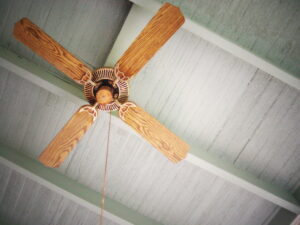Attic fans are normally the last thing on anybody’s list of home improvements, but they really should be bumped up on the priority scale, especially if your home gets particularly hot in the summer.
Your attic can get ridiculously hot and impact the temperature of your home, which then directly affects your cooling costs. Some attics can even reach up to 150° F.
Let’s talk about attic fan installation and how it can prevent major issues for you and your family.
Lowers the Temperature
Sunlight is pouring down on your asphalt shingles and sending heat into your attic. When your attic becomes a hotbed, the heat transfer from your shingles isn’t that effective.
When that happens, your roof shingles can warp and become damaged. By lowering the temperature in your attic, you’re directly helping your shingles transfer heat and not hold onto it.
We know that sounds like a bad thing because the heat will find its way into your attic, but it’s supposed to. This actually helps prevent major roof damage.
An attic fan can reduce the temperature by up to 50° F just by circulating and cooling the air. That’s a massive difference. The hot air in your attic impacts your indoor cooling efforts as well, so you’re not only helping your roof shingles, but you’re also putting less strain on your air conditioner in the process.
Inhibiting Mold Growth
If your attic is too hot, mold doesn’t want to grow. It has an ideal growth temperature range of 60° F to around 80° F. While it can grow outside of those ranges, this is where it thrives.
Mold will also grow in humidity at or above 60%, which is considered the threshold for high humidity. When mold grows, it impacts your family’s health and quality of life, but it also impacts your property.
Mold will damage wood, essentially by eating it. It’s not an immediate danger, though, as surface-level mold and mildew can be removed.
But given enough time, it can lead to wood rot. Circulating the air reduces the humidity level, directly negating the growth of mold provided your attic fan can maintain humidity levels below 60%.
It’s a Mostly Hands-Free Solution
Just like with your HVAC system, your attic fan will come with a thermostat to help read the temperature in the room.
You don’t have to manually turn it on (unless you want to). We say a mostly hands-free solution because you should still be aware of the humidity and temperature in your attic from time to time.
Thankfully, attic fans don’t require the same level of maintenance as your air conditioner, though it’s still good to get it inspected every year or two to make sure it’s working properly.
The Ultimate Preventative Measure
Attic fans can reduce temperatures by up to 50° F. That’s enough to seriously make an impact on how you cool your home. Beyond the temperature, you’ll prevent mold and mildew breakouts while also improving ventilation. If you were waiting on an attic fan for any reason, this is your sign to install one today.
Contact JN Electrical Temperature Control, Inc today to install your attic fan and prevent rising temperatures (and rising issues) in your home.


